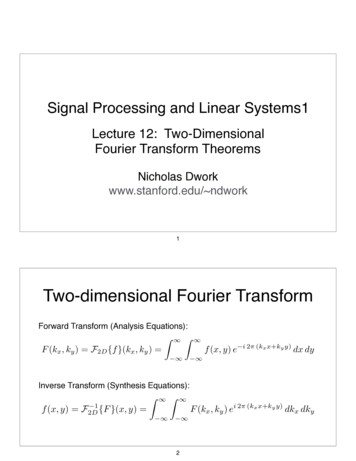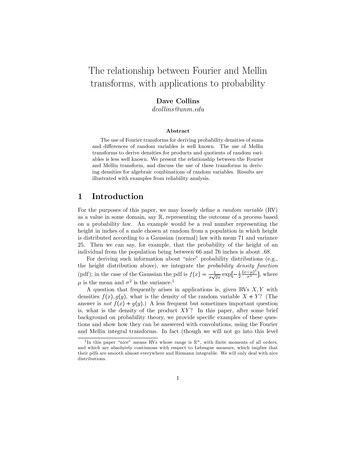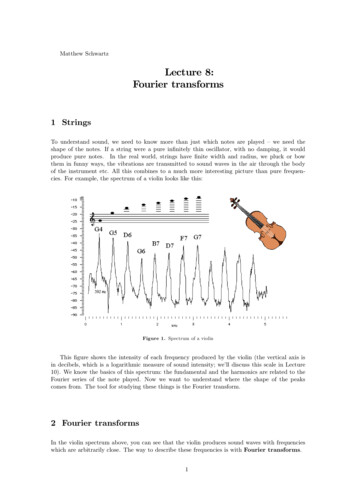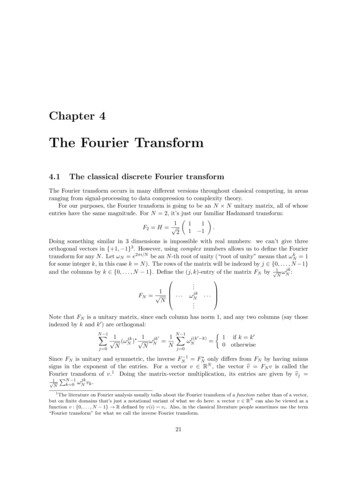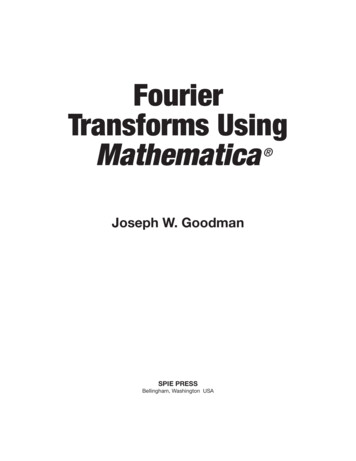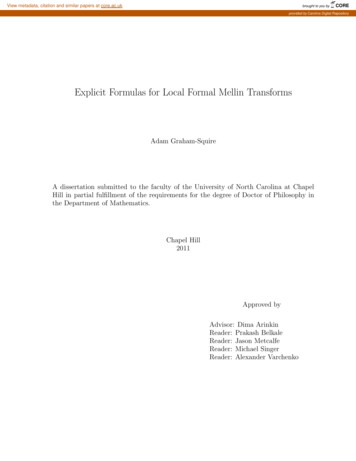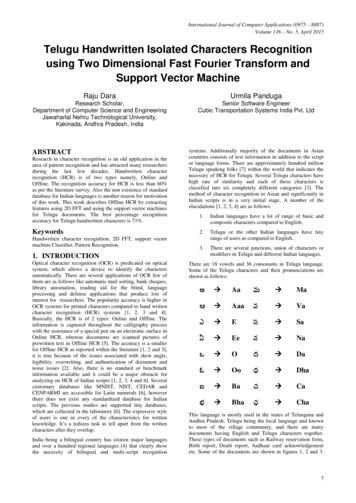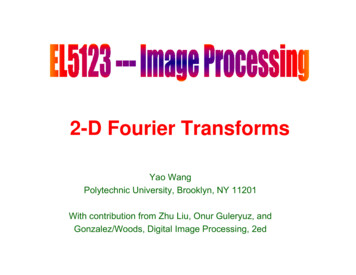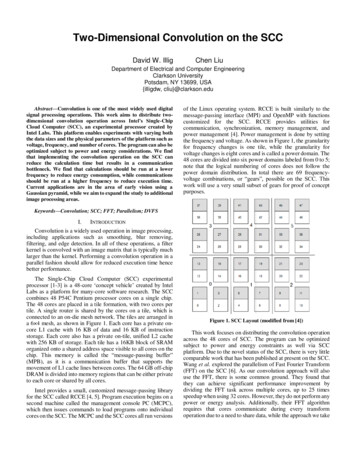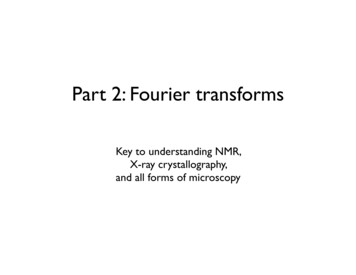
Transcription
Part 2: Fourier transformsKey to understanding NMR,X-ray crystallography,and all forms of microscopy
Sine wavesy(t) A sin(wt p)y(x) A sin(kx p)
To completely specify a sine wave, you need its(1) direction,(2) wavelength or frequency,(3) amplitude, and(4) phase shift
y sin(x)Adding sine wavesy sin(2x)y sin(3x)y sin(x) - 2.3sin(2x) 1.8sin(3x)
Taking sine wave sums apart(a Fourier “decomposition”, or “transform”)
Fourier transforms in music and hearing
Fourier decompositions maynot be exact - depends onhow many terms you use(“resolution”)
The mathematical detailsThe balance between sine and cosine terms can beequivalently introduced by giving each sine term a “phase”
One-dimensional sine waves and their sumsConcept check questions: What four parameters define a sine wave?What is the difference between a temporal and a spatial frequency?What in essence is a “Fourier transform”?How can the amplitude of each Fourier component of a waveform be found?
Analog versus digital .22.82.41.40.1x“digital”
Consider a one-dimensional array:0.3 0.41.33.44.54.22.8 2.4 1.410 numbers0.1Fourier transformA0P0A1P1A2P2A3P3A4P4A5P5A0 amplitude of “DC” componentA1 amplitude of “fundamental” frequency (one wavelength across box)P1 phase of “fundamental” frequency componentA2 amplitude of first “harmonic” (two wavelengths across box)P2 phase of first harmonicA3 amplitude of second harmonicP3 phase of second harmonicetc.A5 amplitude of “Nyquist” frequency component10 numbers 2(5 amps & phases “DC”component)
One dimensional functions and transforms (spectra)Hecht, Fig. 11.13
One dimensional functions and transforms (spectra)Hecht, Fig. 11.13
More complicated functions and their spectraHecht, Fig. 11.38
One-dimensional reciprocal spaceConcept check questions: What is the difference between an “analog” and a “digital” image?What is the “fundamental” frequency? A “harmonic”? “Nyquist” frequency?What is “reciprocal” space? What are the axes?What does a plot of the Fourier transform of a function in reciprocal space tell you?
In microscopy we deal with2-D images and transforms
Two-dimensional waves and imagesConcept check questions: What does a two-dimensional sine wave look like?What do the “Miller” indices “h” and “k” indicate?
23P2321A01P010A00P00 A10A0,-5P0,-5P10A20P20-1-2-3-4-5xN2numbers01234h N2numbers5
A simple 2-D image and transform (diffraction pattern)fy.y.x“Real” space : coordinates“Reciprocal” space : spatial “frequencies”fx
Another simple 2-D image and transformfy.y.xfx
More complex 2-D images and transforms
Briegel et al.,PNAS 2009
“Resolution”Note here the “power” or intensity of each Fouriercomponent is being plotted, not the phase, and forany real image, the pattern is symmetric
FTFTFT“low pass” filterFT“high pass” filterFT“band pass” filterhttp://sharp.bu.edu/ slehar/fourier/fourier.html
Two-dimensional transforms and filtersConcept check questions: In the Fourier transform of a real image, how much of reciprocal space (positive and negativevalues of “h” and “k”) is unique? If an image “I” is the sum of several component images, what is the relationship of its Fouriertransform to the Fourier transforms of the component images? What part of a Fourier transform is not displayed in a power spectrum?What does the “resolution” of a particular pixel in reciprocal space refer to?What is a “low pass” filter? “High pass”? “Band pass”?
In X-ray crystallography,3-D microscopy, and 3-D NMRwe deal with 3-D images and transforms
What does a 3-D FT look like?A555 P555A050 P050A550 P550A05,-5 P05,-55FTA050P050A550 P550432k10A000 P000-1N3 numbers-25-30-4-5A5,-5,00123h4 N3 numbers5P5,-5,0-5l
Three-dimensional waves and transformsConcept check questions: What does a three-dimensional sine wave look like?What does the third “Miller” index “l” represent?
Convolution
Zhu et al., JSB 2004
Convolution and cross-correlationConcept check questions: What is a “convolution”?What is the “convolution theorem”?What is a “point spread function”?What does convolution have to do with the structure of crystals?What is “cross-correlation”?How might cross-correlations be used in cryo-EM?
Two-dimensional transforms and filters Concept check questions: In the Fourier transform of a real image, how much of reciprocal space (positive and negative values of “h” and “k”) is unique? If an image “I” is the sum of several component images, what is the relationship of its Fourier transform to the
